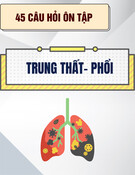
Can Tho Journal of Medicine and Pharmacy 9(5) (2023)
104
Chandigarh using dft/ DMFT and SiC Index: A Cross-sectional study", Journal of Family
Medicine and Primary Care, 9 (2), pp. 819-825.
12. Salim N.A., Shaini F.J., Sartawi S., Al-Shboul B. (2021), "Oral Health Status and Dental
Treatment Needs in Syrian Refugee Children in Zaatari Camp", Journal of Refugee Studies,
34 (2), pp. 2492–2507.
13. Sánchez-Pérez L., Sáenz-Martínez L.P., Molina-Frechero N., Irigoyen-Camacho M.E.,
Zepeda-Zepeda M., et al. (2021), "Body Mass Index and Dental Caries, a Five-Year Follow-
Up Study in Mexican Children", International Journal of Environmental Research Public
Health, 18 (14), p. 7417.
14. Tai Tran Tan (2016), Dental caries and effectiveness of community-based interventions in
students at some elementary schools in Thua Thien Hue, PhD Thesis, University of Medicine
and Pharmacy, Hue University.
15. Vasavan S.K., Retnakumari N. (2022), "Assessing consequences of untreated dental caries
using pufa/PUFA index among 6–12 years old schoolchildren in a rural population of Kerala",
Journal of Indian Society of Pedodontics and Preventive Dentistry, 40 (2), pp. 132-139.
(Received: 12/1/2023 – Accepted: 19/2/2023)
CLINICAL FEATURES OF GINGIVAL HYPERPIGMENTATION IN
VIETNAMESE OUTPATIENTS
Nguyen Huynh Mai, Tran Huynh Trung, Pham Thi Mung,
Phan Nguyen Phuc Toan*
Can Tho University of Medicine and Pharmacy
Email: 1753020043@student.ctump.edu.vn
ABSTRACT
Background: Gingival esthetics was considered one of the most significant aspects of aesthetic
smiles, especially in those with gingival hyperpigmentation. Understanding the features, distribution, and
causes impacting gingival pigmentation was critical for developing an effective treatment plan. Objectives:
The prevalence of gingival hyperpigmentation in outpatients at Can Tho University of Medicine and
Pharmacy Hospital; the association between gingival hyperpigmentation and age, gender, smoking status,
and skin color. Material and Methods: Descriptive cross-sectional method; convenience sampling.
Results: In a total of 100 outpatients, the rate of gingival hyperpigmentation was 53%, of which 40% had
mild gingival hyperpigmentation according to DOPI (grade 1), 13% had moderate gingival
hyperpigmentation (grade 2), and 13% had heavy gingival hyperpigmentation disease (grade 3). The study
collected 3/6 groups of gingival melanin hyperpigmentation according to Ponnaiyan's classification. Of all
the hyperpigmentation groups according to Hedin's classification, the hyperpigmentation group forming a
long continuous ribbon accounted for a high proportion (45% in the maxilla, 40% in the mandible). The
rates of gingival hyperpigmentation in the group of 40-year-old patients and the others were 48.8% and
75%, respectively. Conclusion: There was a statistically significant relationship between gingival melanin
pigmentation and skin color. The percentage of melanin pigmentation was higher in those with dark skin.
There were no differences in the ratios for age, gender, or smoking status.
Keywords: gingival hyperpigmentation, DOPI, Ponnaiyan, Hedin.






























